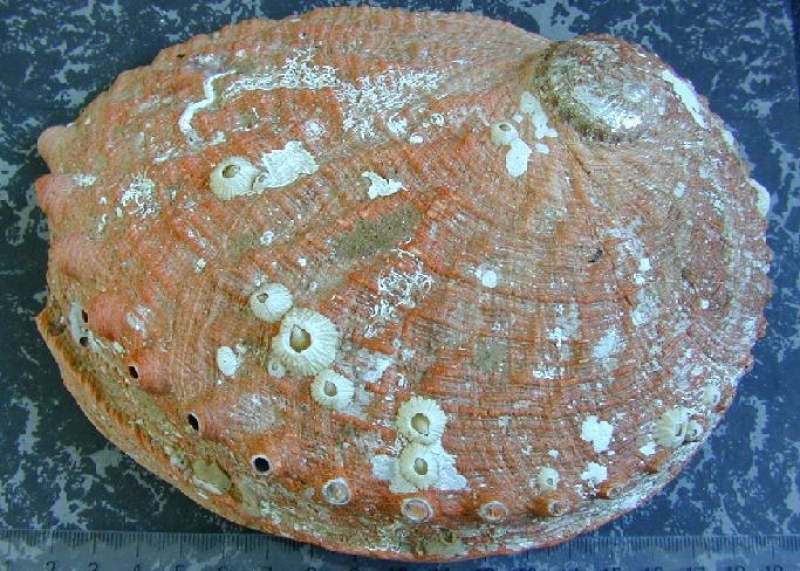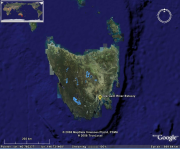Oceans | Marine Biology | Marine Habitat
Type of resources
Topics
Keywords
Contact for the resource
Provided by
Years
-
The aim of this study is to use artificial boulders in the form of sandstone blocks to investigate the benthic cryptofaunal communities of subtidal rocky reefs; specifically to quantify temporal and spatial patterns, the influence of the sub-block reef profile, and protection from fishing on these animals at locations inside and external to the Maria Island marine reserve in eastern Tasmania.
-
Webcam established at North Bay, Tasmania, early 2010 as a deterrent for poaching translocated lobsters. Webcam is sited on the southern end of the site facing north. Pictures are taken every 15 minutes and transmitted to a server where they can be accessed remotely by users. As at Novenber 2011, pictures are still being taken and archived.
-
Timed GPS-tracked swims using SCUBA (45 and 30 minutes), were used to assess the changes in frequency and size of Centrostephanus rodgerii incipient barrens in eastern Tasmania. The number of C. rodgerii and Heliocidaris erythrogramma in each incipient barren were also assessed.
-
The data is a collection of reef habitat structure measurements from sites around Tasmania with regional snapshots from Jurien Bay (WA) and Jervis Bay (NSW). Explanatory variables investigated were depth, duration of protection from fishing within marine protected area, rugosity, boulder substratum at a site, the average number of refuge size categories, and a fractal refuge index that reflected the frequency distribution of different sized physical refuges. Also considered were biogenic habitat structure in the form of the percent cover of canopy algae and the biomass of predatory fish.
-

In 2006, transect surveys were conducted at sites in eastern inshore Tasmanian waters at depths and habitats typical of those where abalone are commercially fished. Surveys focused on four areas of the Tasmanian coastline including St Helens, Bicheno and Dunalley on the east coast and the Actaeons region on the south-east coast; with at least 10 reefs sampled in each region.
-

The survey comprises two streams of data, including (1) the availability of different attachment sites and (2) the algal composition of abalone attachment sites ('homesites'). The survey was conducted at three sites at each of three regions on the east coast of Tasmania.
-

This study reports on previously undescribed predation on Asterias amurensis in the Derwent Estuary, Tasmania by the spider crab Leptomithrax gaimardii (Milne Edwards). Specifically, this study describes the predatory interaction between the spider crab and A. amurensis and quantifies patterns of sub-lethal injuries inflicted on the seastar during a localised aggregation of the spider crab.
-
Characterisation of lobster (Jasus edwardsii) abundance and change in abundance at three different sampling sites (Cape Paul Lemanon, North Bay and Fortescue Bay) on the south-east coast of Tasmania, was assessed by GPS tracked SCUBA diver swims of 60 minutes in length whereby GPS was logged approximately every 5 seconds. Large tagged Rock Lobsters were introduced into one of the sampling sites, North Bay (which was closed to fishing). The swims are also being used to assess the impact of reef closure on the local lobster population.
-
A photographic and in situ diver survey of marked incipient Centrostephanus rodgersii barren patches, in eastern Tasmanian, was used to assess any changes in the grazed area and shape at experimental (lobster translocation/ research reserve protection sites; and abalone diver urchin cull sites) versus control sites.
-
Linear video transects (40m total length; 20m into barrens and 20m into kelp from original fixed marker on the benthos) were used to assess changes in kelp growth in several points along the kelp - urchin barren interface in north-east Tasmania (St. Helens Island, Sloop Rock and Elephant Rock research areas). The video transects were deployed in the same position, and assessed at different points of time. The video was analysed in the laboratory to assess percentage of kelp and barren cover, as well as the kind of substratum, kelp species identifiable and number of sea urchins (Centrostephanus rodgerii and Heliocidaris erythrogramma) and other benthic organisms when present (rock lobster and abalone).
 IMAS Metadata Catalogue
IMAS Metadata Catalogue